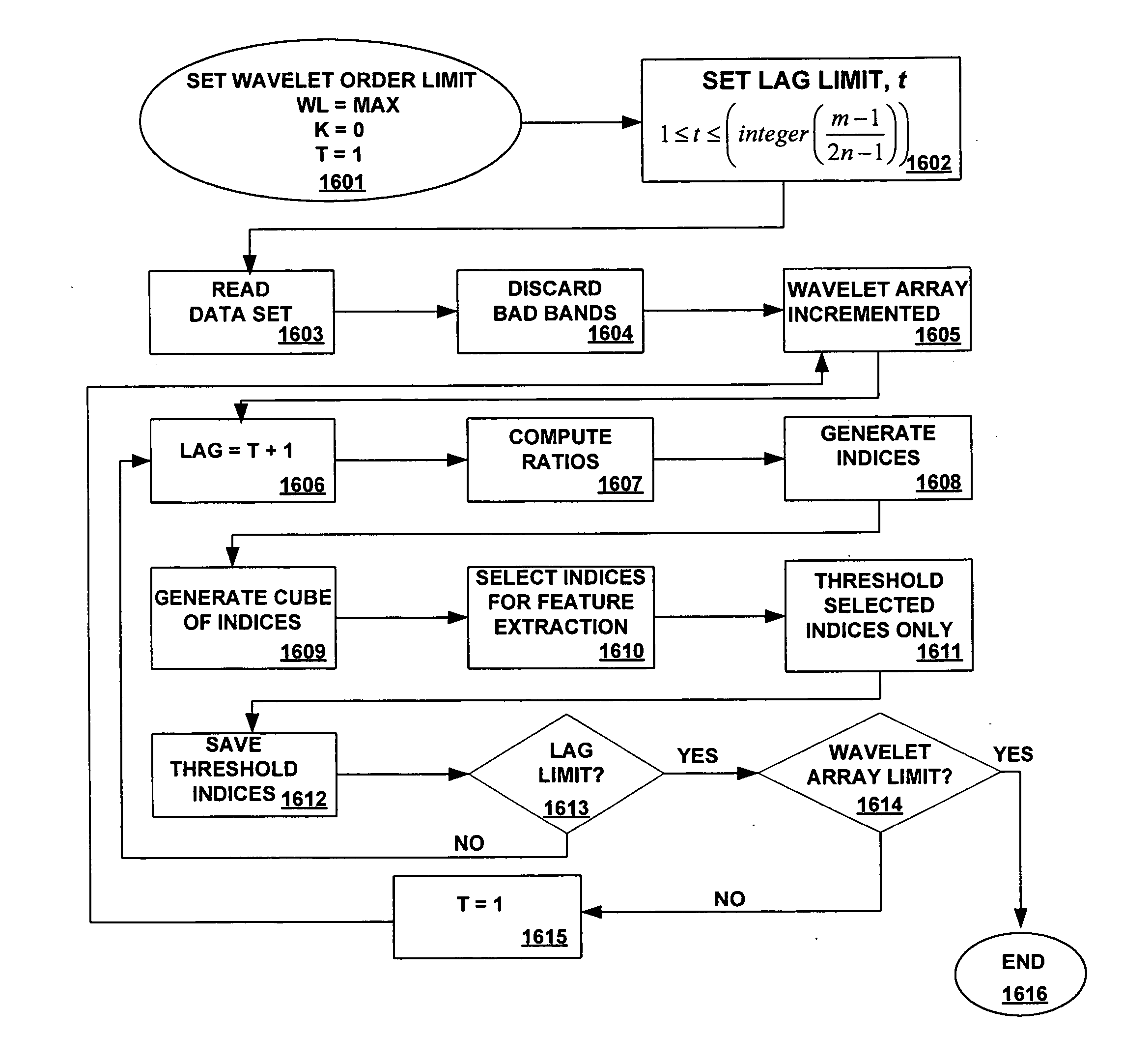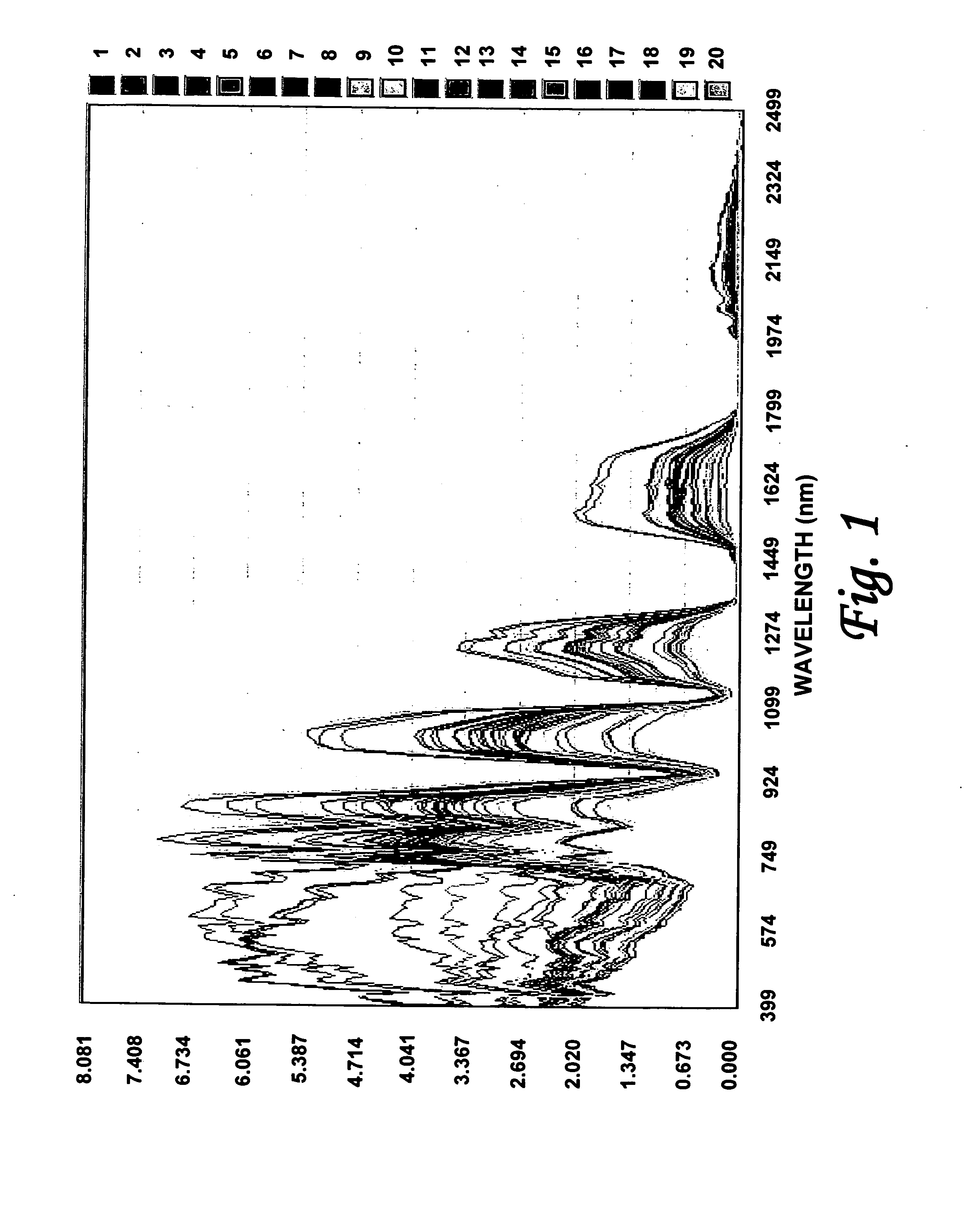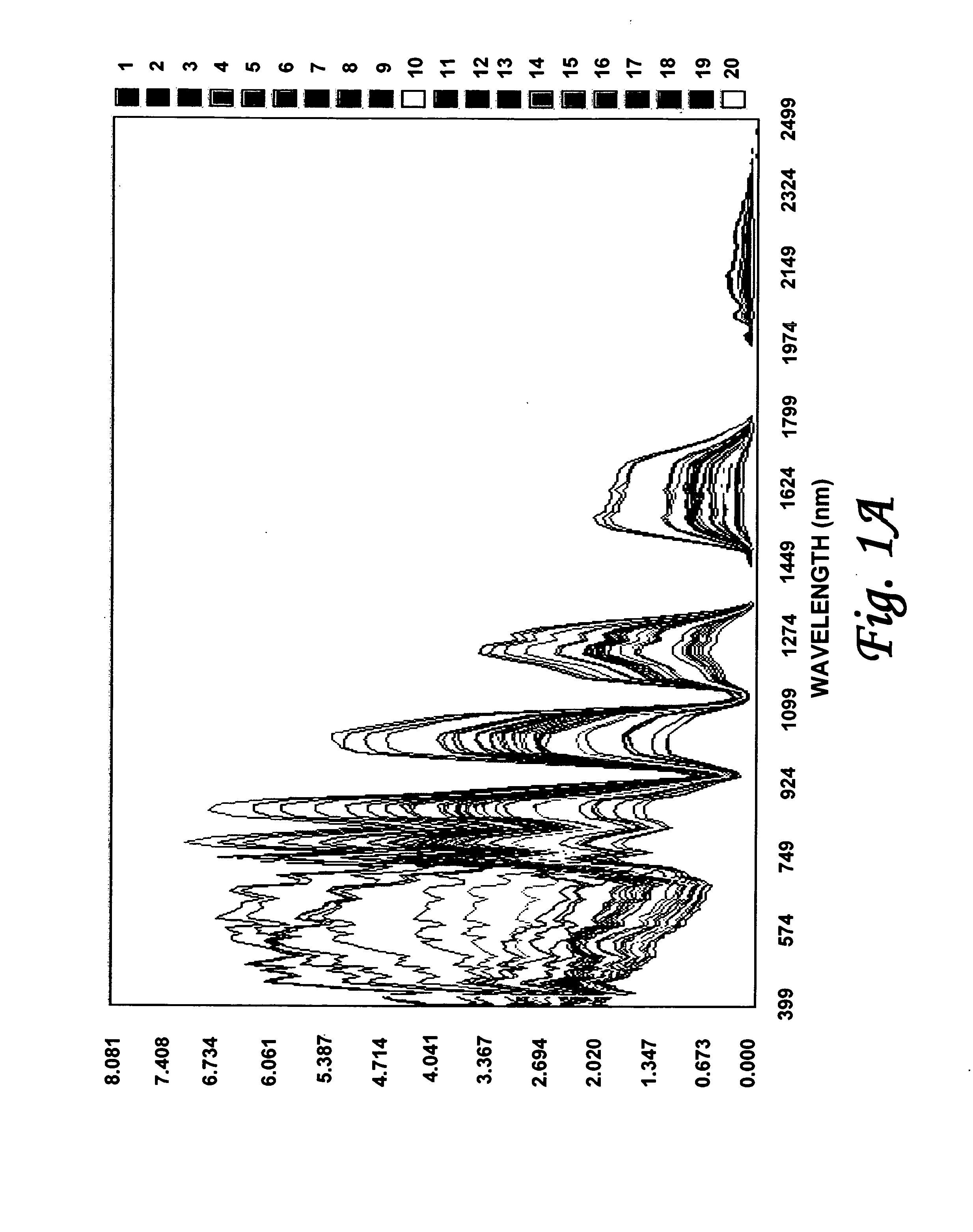Efficient imagery exploitation employing wavelet-based feature indices
a technology of feature indices and wavelet-based images, applied in scene recognition, instruments, computing, etc., can solve the problems of inability to self-determine or self-calibrate, computationally intensive, and thus expensive, and is not practicable to analyze manually
- Summary
- Abstract
- Description
- Claims
- Application Information
AI Technical Summary
Problems solved by technology
Method used
Image
Examples
example i
[0109] Data were collected with a Hyperspectral Digital Collection Experiment (HYDICE) airborne sensor. This sensor uses a 320×210 array with multiple gain regions to support imaging at 400-2500 ηm. The sensor is flown at 5000 to 25000 ft and achieves spatial resolution of about 0.8 to 4 m. Basedow, R. W., D. C. Carmer, and M. E. Anderson, Hydice: Operational Status, Proceedings of the SPIE, Vol. 2480, May 1994.
[0110] Data were collected over Copperas Cove, Tex. and the neighboring vicinity. The aircraft flew at an altitude of 20,000 ft to provide a spatial resolution of three (3) meters in 210 spectral bands from 398.5-2499.2 ηm. Twelve (12) features were identified in the hyperspectral scene: buildings 301, roads 302, soil 303, rooftops 304, canvas (not shown separately), rubber (not shown separately), metal (not shown separately), shrubs 305, plastic, grass 306, trees 307, and calibration panels (not shown separately). Refer to FIG. 3 depicting the hyperspectral composite class ...
example ii
[0111] Data were also collected over Yuma City, Ariz. The aircraft flew at an altitude of 5000 ft to provide a spatial resolution of one (1) meter in the same number of bands as in Example 1. However, for this example only 204 bands were employed to image. These data are not calibrated. Eight (8) features were identified in the scene including: buildings 401, roads 402, soil 403, rooftops 404, shrubs 405, grass 406, trees 407, and swimming pools 408. FIG. 4 is a grayscale composite of the imaged area while FIG. 4A is the same Yuma City composite in color.
[0112] In the data sets for Examples I and II the interval between bands is not constant. Table I below summarizes the first three (3) and last five (5) wavelengths measured for each data set. The plot of the wavelength interval for Copperas Cove is a monotonic curve starting with an approximate interval of 3.3 and increasing to about 8.3 ηm. The same plot for Yuma City data is a step function with the interval a constant amount fo...
example iii
[0127] Refer to FIG. 16, a sample flow diagram for a process used in select embodiments of the present invention to perform data mining to streamline the processing of hyperspectral data in those cases in which specific features are to be identified or highlighted. To start the process at step 11601 the pre-specified limit of the wavelet array index, K, is selected and set and start values of wavelet array index, K, and lag, T, are set to zero and 1, respectively. Next at step 21602, the limit for lag is set. Having set these two limits, step 31603 involves reading in the hyperspectral data set. Step 41604 discards those bands that contain compromised (bad) data. (Although this step is taken early in the process to reduce the amount of data handled early on, “bad bands” would be eliminated at step 101610 below in any case.) The wavelet array index, K, is then incremented appropriately in step 51605. In step 61606, the lag, T, is incremented by 1 and step 71607 calculates the ratios ...
PUM
 Login to View More
Login to View More Abstract
Description
Claims
Application Information
 Login to View More
Login to View More - R&D
- Intellectual Property
- Life Sciences
- Materials
- Tech Scout
- Unparalleled Data Quality
- Higher Quality Content
- 60% Fewer Hallucinations
Browse by: Latest US Patents, China's latest patents, Technical Efficacy Thesaurus, Application Domain, Technology Topic, Popular Technical Reports.
© 2025 PatSnap. All rights reserved.Legal|Privacy policy|Modern Slavery Act Transparency Statement|Sitemap|About US| Contact US: help@patsnap.com



